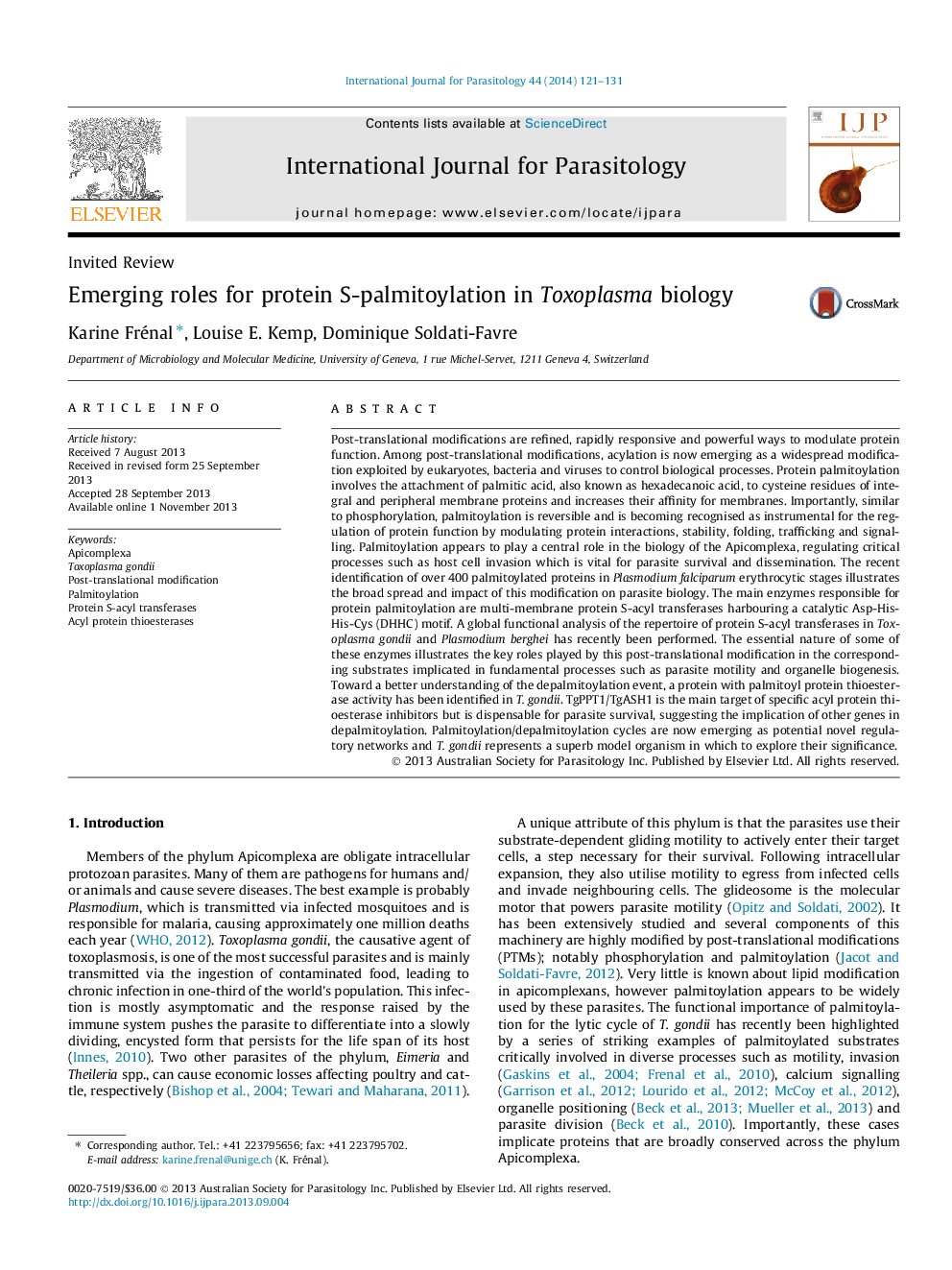| کد مقاله | کد نشریه | سال انتشار | مقاله انگلیسی | نسخه تمام متن |
|---|---|---|---|---|
| 2436092 | 1107273 | 2014 | 11 صفحه PDF | دانلود رایگان |

• Palmitoylation is a reversible post-translational modification emerging as widely used by the Apicomplexa.
• Palmitoylation impacts on the function of several proteins critical for Toxoplasma biology.
• Toxoplasma possesses 18 protein S-acyl transferases (PATs), five of which are essential for its survival.
• Protein depalmitoylation is catalysed by acyl protein thioesterases (APTs) that await further investigation in Apicomplexa.
Post-translational modifications are refined, rapidly responsive and powerful ways to modulate protein function. Among post-translational modifications, acylation is now emerging as a widespread modification exploited by eukaryotes, bacteria and viruses to control biological processes. Protein palmitoylation involves the attachment of palmitic acid, also known as hexadecanoic acid, to cysteine residues of integral and peripheral membrane proteins and increases their affinity for membranes. Importantly, similar to phosphorylation, palmitoylation is reversible and is becoming recognised as instrumental for the regulation of protein function by modulating protein interactions, stability, folding, trafficking and signalling. Palmitoylation appears to play a central role in the biology of the Apicomplexa, regulating critical processes such as host cell invasion which is vital for parasite survival and dissemination. The recent identification of over 400 palmitoylated proteins in Plasmodium falciparum erythrocytic stages illustrates the broad spread and impact of this modification on parasite biology. The main enzymes responsible for protein palmitoylation are multi-membrane protein S-acyl transferases harbouring a catalytic Asp-His-His-Cys (DHHC) motif. A global functional analysis of the repertoire of protein S-acyl transferases in Toxoplasma gondii and Plasmodium berghei has recently been performed. The essential nature of some of these enzymes illustrates the key roles played by this post-translational modification in the corresponding substrates implicated in fundamental processes such as parasite motility and organelle biogenesis. Toward a better understanding of the depalmitoylation event, a protein with palmitoyl protein thioesterase activity has been identified in T. gondii. TgPPT1/TgASH1 is the main target of specific acyl protein thioesterase inhibitors but is dispensable for parasite survival, suggesting the implication of other genes in depalmitoylation. Palmitoylation/depalmitoylation cycles are now emerging as potential novel regulatory networks and T. gondii represents a superb model organism in which to explore their significance.
Figure optionsDownload high-quality image (118 K)Download as PowerPoint slide
Journal: International Journal for Parasitology - Volume 44, Issue 2, February 2014, Pages 121–131